一、下載編譯功能包
?
cd ~/catkin_ws/src
sudo apt-get install https://github.com/ros-planning/navigation
cd ..
catkin_make
二、功能包里涵蓋的文件
功能包 功能
acml 定位算法
move_base navigation中最主要的框架
base_local_planner 局部路徑規劃器
dwa_local_planner dwa算法局部路徑規劃實現
global_planner 全局路徑規劃
navfn 全局路徑規劃,舊版本的,有bug
carrot_planner 一個簡單的全局路徑規劃器
clear_costmap_recovery 清除代價地圖的恢復行為
costmap_2d 實現2d代價地圖
fake_localization acml的API接口
map_server 提供地圖數據,yaml或者是image
move_slow_and_clear 緩慢移動修復機制,會限制機器人速度
nav_core 路徑規劃接口類
rotate_recovery 旋轉恢復
voxel_grid 三維代價地圖
全局規劃器有 3 個:
(1)carrot_planner
carrot_planner 檢查需要到達的目標是不是一個障礙物,如果是一個障礙物,它就將目標點替換成一個附近可接近的點。因此,這個模塊其實并沒有做任何全局規劃的工作。在復雜的室內環境中,這個模塊并不實用。
(2)navfn
navfn使用 Dijkstra 算法找到最短路徑。
(3)global planner
global planner是navfn的升級版。
它相對于navfn增加了更多的選項:支持 A* 算法;可以切換二次近似;切換網格路徑;
三、Global Planner 全局路徑規劃
該文件下的內容:10個頭文件,8個源文件
看其中A*算法的文件
先做一個算例,結合算例理解
以下文件會包含其他文件,需要整體看,這里先整理三個文件,其他的慢慢來
1、astar.h
#ifndef _ASTAR_H
#define _ASTAR_H
#include
#include
#include
#include
namespace global_planner {
class Index {
public:
Index(int a, float b) {
i = a;
cost = b;
}
int i;
float cost;
};
//Index(i,cost)對應的點及代價
struct greater1 {
bool operator()(const Index& a, const Index& b) const {
return a.cost > b.cost;
}
};
class AStarExpansion : public Expander {
public:
AStarExpansion(PotentialCalculator* p_calc, int nx, int ny);
bool calculatePotentials(unsigned char* costs, double start_x, double start_y, double end_x, double end_y, int cycles, float* potential);
private:
void add(unsigned char* costs, float* potential, float prev_potential, int next_i, int end_x, int end_y);
std::vector queue_;
};
}
?
2、astar.cpp
?
#include
#include
namespace global_planner {
AStarExpansion::AStarExpansion(PotentialCalculator* p_calc, int xs, int ys) :
Expander(p_calc, xs, ys) {
} //命名空間名::標識符名?
/*
costs: 地圖指針
cycles:循環次數
*/
bool AStarExpansion::calculatePotentials(unsigned char* costs, double start_x, double start_y, double end_x, double end_y,int cycles, float* potential) //傳參
{
//queue_為啟發式搜索到的向量隊列:
queue_.clear(); //清空函數:將隊列清空
//將起點放入隊列
int start_i = toIndex(start_x, start_y);
//(1,2)
//push_back:向數據結構中添加元素
queue_.push_back(Index(start_i, 0));
//首先將start點以及其代價加入,即(13,0)
//std::fill函數的作用是:將一個區間的元素都賦予指定的值,即在(first, last)范圍內填充指定值
//將所有點的potential都設為一個極大值,potential就是估計值g,f=g+h
std::fill(potential, potential + ns_, POT_HIGH); //?
//將起點的potential設為0
potential[start_i] = 0;
//終點對應的序號
int goal_i = toIndex(end_x, end_y);//(4,4)
int cycle = 0;
//進入循環,繼續循環的判斷條件為只要隊列大小大于0且循環次數小于cycles
//代碼中cycles = 2 *nx * ny, 即為所有格子數的2倍 //?
//目的:得到最小cost的索引,并刪除它,如果索引指向goal(目的地)則退出算法,返回true
while (queue_.size() > 0 && cycle < cycles)
{
Index top = queue_[0];
///將首元素放到最后,其他元素按照Cost值從小到大排列
//pop_heap() 是將堆頂元素與最后一個元素交換位置,之后用pop_back將最后一個元素刪除
//greater1()是按小頂堆
std::pop_heap(queue_.begin(), queue_.end(), greater1());
queue_.pop_back();
//如果到了目標點,就結束了
int i = top.i;
if (i == goal_i)
return true;
// 對前后左右四個點執行add函數,將代價最小點i周圍點加入搜索隊里并更新代價值
add(costs, potential, potential[i], i + 1, end_x, end_y);
add(costs, potential, potential[i], i - 1, end_x, end_y);
add(costs, potential, potential[i], i + nx_, end_x, end_y);
add(costs, potential, potential[i], i - nx_, end_x, end_y);
cycle++;
}
return false;
}
/*add函數:添加點并更新代價函數;
如果是已經添加的點則忽略,根據costmap的值如果是障礙物的點也忽略。
potential[next_i]是起點到當前點的cost即g(n),
distance * neutral_cost_是當前點到目的點的cost即h(n)。
f(n) = g(n) + h(n)
*/
// potential 存儲所有點的g(n),即從初始點到節點n的實際代價
// prev_potentia 當前點的f
void AStarExpansion::add(unsigned char* costs, float* potential, float prev_potential, int next_i, int end_x,int end_y)
{
//next_i 點不在網格內,忽略
if (next_i < 0 || next_i >= ns_) //ns_?
return;
//未搜索的點cost為POT_HIGH,如小于該值,則為已搜索點,跳過;
//potential[next_i]是起點到當前點的cost即g(n)
if (potential[next_i] < POT_HIGH) //POT_HIGH?
return;
//障礙物點,忽略?
if(costs[next_i]>=lethal_cost_ && !(unknown_ && costs[next_i]==costmap_2d::NO_INFORMATION))
return;
// potential[next_i]是起點到當前點的cost即g(n)
// potential 存儲所有點的g(n),即從初始點到節點n的實際代價
// prev_potentia 當前點的f
// =====見下方potential_calculate.cpp文件=====
potential[next_i] = p_calc_->calculatePotential(potential, costs[next_i] + neutral_cost_, next_i, prev_potential);
// 得到在柵格地圖中的(x,y)
int x = next_i % nx_, y = next_i / nx_;
//x=14%5=4 y=14/5=2 ?
//啟發式函數:即h(n) 從節點n到目標點最佳路徑的估計代價,這里選用了曼哈頓距離
float distance = abs(end_x - x) + abs(end_y - y);
// A的i值是13,則add中的next_i分別是12,14,7,19。
// 以14為例,則x=2, y=2。而B為(4,4)。因此distance = 2+2 =4
// 由于這只是格子的個數,還有乘上每個格子的真實距離或者是分辨率,所以最后的H = distance *neutral_cost_
// 因此最后的F = potential[next_i] + distance *neutral_cost_ (F=g+h)
// 將當前點next_i以及對應的cost加入
queue_.push_back(Index(next_i, potential[next_i] + distance * neutral_cost_));
//potential[next_i]:是起點到當前點的cost即g(n)
//distance * neutral_cost_:是當前點到目的點的cost即h(n)。
//f(n)=g(n)+h(n):計算完這兩個cost后,加起來即為f(n),將其存入隊列中。
//對加入的再進行堆排序, 把最小代價點放到front隊頭queue_[0]
//數據結構?
std::push_heap(queue_.begin(), queue_.end(), greater1());
}
}
?
3、potential_calculate.h
neutral_cost_ 設定的一個默認值,為50
calculatePotential()計算根據use_quadratic的值有下面兩個選擇:
若為TRUE, 則使用二次曲線計算
若為False, 則采用簡單方法計算, return prev_potential + cost。即:costs[next_i] + neutral_cost_+ prev_potential
地圖代價+單格距離代價(初始化為50)+之前路徑代價為G
?
#ifndef _POTENTIAL_CALCULATOR_H
#define _POTENTIAL_CALCULATOR_H
#include
namespace global_planner {
class PotentialCalculator
{
public:
PotentialCalculator(int nx, int ny)
{
setSize(nx, ny);
}
virtual float calculatePotential(float* potential, unsigned char cost, int n, float prev_potential=-1)
{
if(prev_potential < 0)
{
float min_h = std::min( potential[n - 1], potential[n + 1] ),
min_v = std::min( potential[n - nx_], potential[n + nx_]);
prev_potential = std::min(min_h, min_v);
}
return prev_potential + cost;
}
//在prev_potentia當前點的f不小于0的時候,返回的是prev_potential + cost
//以start_cost為例,最開始給其賦值是0,因此返回就是cost,可以理解為到下一個柵格的距離,或者是分辨率。
//在計算完potential=g值后開始計算h值,即distance,利用的就是移動多少格子,只能上下左右移動.
virtual void setSize(int nx, int ny)
{
nx_ = nx;
ny_ = ny;
ns_ = nx * ny;
}
protected:
inline int toIndex(int x, int y)
{
return x + nx_ * y;
}
int nx_, ny_, ns_;
};
}
?
 電子發燒友App
電子發燒友App













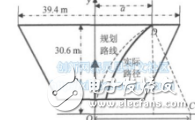





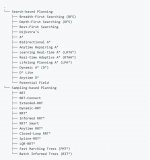
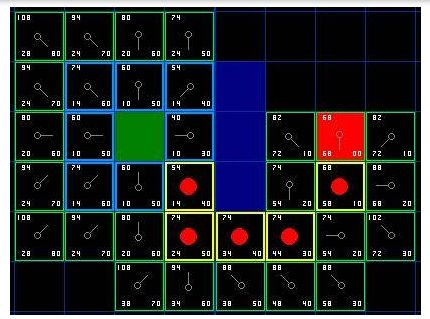
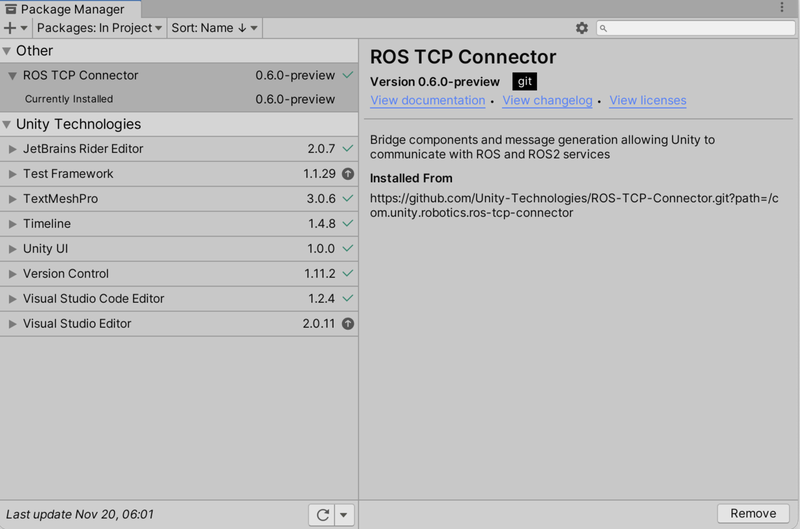
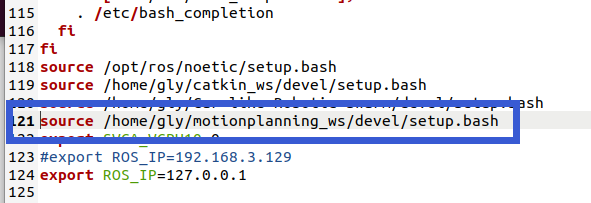











評論